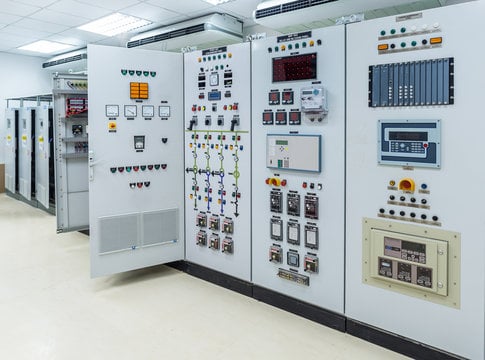The fundamental functioning and performance of equipment linked to the distribution network are directly impacted by the quality of the power supply. It is anticipated that the equipment will operate as designed and that its useful life will be equivalent to the value given. Similarly, it is hoped that the network’s stability would be adequate to prevent issues such as insufficient output or lost functionality.
The power system is plagued by several power quality problems. These power quality disturbances, regardless of length, may cause device damage. Therefore, it is necessary to maintain power quality to prevent equipment failure. This blog will address the research necessary for measuring the quality and dependability of power. Following this, several systems, and techniques for evaluating the impact and regulation of power quality are examined.
Unlike dependability, which is concerned with extended power outages, the implications of power quality problems are not immediately visible. In certain instances, however, the immediate impact of a power quality interruption is equipment damage and/or a processing delay. This holds true for pauses, interruptions, and ephemera.
In certain instances, the effects of an interruption in power quality may not be immediately evident. Equipment degradation is one instance. For decades, equipment deterioration proceeds unchecked under these settings. In other instances, power quality concerns result in extra losses that are absorbed as part of the cost of doing business and are thus disregarded.
Effects of Substandard Electricity:
Immediate economic implications include:
- Production losses Extra expenses associated with restarting a process
- Equipment damage and repair costs
- More downtime and delays
- Human health and safety concerns
- Costs incurred because of contract violation.
- Sanctions in the form of money for environmental offenses
- Utility expenses have risen because of the outage.
Indirect economic implications include:
- A company’s expenditures incurred because of delayed revenue/income.
- The monetary cost of losing market share
- The price of regaining brand value
Socioeconomic implications include:
- Increased building temperatures may have an impact on performance, health, and safety.
- A personal hurt or apprehension
- Failure to detect a power quality disruption might result in electrical danger.
Understanding the Origins of Poor Electricity:
Voltage, frequency, and waveform of a power supply system are evaluated to establish its power quality. However, power quality is impacted by several variables. This blog discusses the following concerns with electrical quality:
- Constant voltage:
- Insufficient Voltage:
- Voltage harmonics:
- Flickering or changing voltage:
- Voltage sags and outages:
1. Constant voltage:
Long-term sustained voltage magnitudes (minutes or hours) correlate to steady-state voltage magnitudes. The major implications of prolonged high voltage levels (overvoltage) or low voltage levels (undervoltage) include equipment failure, increased energy consumption of equipment, and probable system malfunction.
2. Insufficient Voltage:
Unbalanced voltage is usually related with increased losses, notably in induction and three-phase motors.
- This results in reversed torque and bearing wear.
- The current capacity of additional stator and rotor heating Installation cables is lowered.
- Further losses are incurred by the neutral conductor.
- More energy is wasted on wires.
3. Voltage Harmonics:
All energy users create harmonic currents, which are then injected into the power system. Harmonic currents are alternating current currents with frequencies that are multiples of 50 hertz. Non-linear electrical equipment such as computers, variable speed drives (VSD), and discharge lamps are the most prevalent generators of harmonic currents. Harmonic currents may be extremely dangerous to the installation and the power supply network. Damaged components, damage to installation parts, component loading, inefficient use of the installation’s current carrying capacity, reduced component lifespan, and ineffective operation of protective components are only a few of the repercussions of harmonic.
4. Flickering or Changing Voltage:
Flicker is a voltage waveform envelope modulation. It generates cyclic fluctuations in light intensity in incandescent lighting sources. In some people, this periodic change in light output can cause health problems ranging from discomfort and decreased productivity to migraines and, in rare circumstances, seizures.
5. Voltage Sags and Outages:
During voltage sags and interruptions, most equipment is not harmed; however, lengthier disruptions commonly result in output loss owing to equipment tripping. One frequent observation is that the cost of a long interruption does not follow a linear relationship with its duration, but rather follows a logarithmic curve. According to reports, the following elements have a significant impact on the expense of a protracted interruption:
- The cost difference between a one-second, one-minute, and one-hour disruption, for example, is considered minimal in the manufacturing business.
- The day, time, and place of occurrence (weekday, weekend, daytime, nighttime)
AEMO’s value of customer reliability (VCR) measures the economic impact of outages on all users. While these numbers indicate consumers’ willingness to pay to avoid a disruption, this desire to pay is likely to be significantly tied to the actual cost. A one-second outage costs around 20% of what a one-hour outage costs, according to these estimates.
How Can Power Quality Problems Be Reduced?
CareLabs offers several power quality services to help discover and diagnose them. Among them are the following:
- Load Flow Analysis: This analysis is performed in line with the operational circumstances. It forecasts the magnitudes of power flows, voltage levels, pf, and system losses.
- The practice of discovering and anticipating prospective harmonic difficulties using computer algorithms is known as harmonic analysis. Additionally, based on the results, reducing approaches are offered.
- Surge and Transient Analysis: This research identifies the cause of transients and surges.
- Analysis of Voltage Dips and Swells: This analysis would follow the short-term dip and increase in voltage, as well as its value and course.
- Reactive Power Analysis: This study will establish the preferred reactive power at the distribution and load ends.
- Analysis of Captive Power: This study would quantify and synchronize captive electricity to fulfill demand while reducing energy surcharges and fuel use.
ETAP (Electrical Transient Analysis Program) – Electrical Transient Analysis Program software is used by CareLabs to examine and assess power quality. It is the greatest software tool for doing calculations and simulations for all electrical system components, assuring the safety of the equipment.
We provide power quality analysis services in all major cities, including Amsterdam, Rotterdam, The Hague, and Utrecht. CareLabs is committed to offering the highest level of service to increase the quality and dependability of your electrical system. Call us right now to book your power quality inspection.




